 |
 |
 |
| |
Worse Response to PegIFN/RBV for HCV After Transplant in HIV/HCV+ vs HCV+
|
| |
| |
53rd ICAAC, September 10-13, 2013, Denver
Mark Mascolini
People coinfected with HIV and HCV had a lower chance of responding to pegylated interferon plus ribavirin (PegIFN/RBV) for recurrent HCV after liver transplantation than did people infected only with HCV [1]. Five-year survival was high in both groups among the minority who achieved sustained virologic response (SVR) to PegIFN/RBV.
Recurrent HCV infection after liver transplantation poses a high risk of liver graft loss and death in HIV/HCV-coinfected people. But aside from data from a few small case series, few findings have emerged on response to PegIFN/RBV among coinfected people with recurrent HCV after transplantation. In part to address that lack, Spanish investigators are conducting the prospective multicenter observational FIPSE study comparing coinfected and monoinfected posttransplant patients [1,2].
The overall cohort includes 149 consecutive HIV/HCV-coinfected patients who had liver transplants between 2002 and 2009 throughout Spain and follow-up until July 2012. FIPSE investigators matched them to 447 HCV-monoinfected people who had liver transplants at the same sites. The researchers also matched HIV/HCV cases and HCV-only controls by calendar year, age, gender, HBV coinfection, and hepatocellular carcinoma status.
The population for the PegIFN/RBV study included 78 coinfected people and 176 monoinfected people who started those drugs for HCV recurrence. Study participants had pretransplant CD4 counts above 100 (or above 200 if they had a previous opportunistic infection) and an HIV load below 50 copies or predicted to be below 50 copies. The analysis excluded people who used heroin or cocaine in the past 2 years and people who abused alcohol in the past 6 months. Treatment for recurrence consisted of PegIFN alpha2a or alpha2b plus 400 to 1000 mg of ribavirin daily.
The 78 coinfected people were significantly younger than monoinfected controls (43 versus 47, P < 0.0001). Coinfected people began PegIFN/RBV significantly sooner after transplantation than did controls (10 versus 15 months, P = 0.024), and a significantly lower proportion of coinfected people had HCV genotype 1 (54% versus 84%, P < 0.0001). A higher proportion of coinfected people had histologically severe HCV reinfection (30% versus 16%, P = 0.0375), though median alanine aminotransferase was significantly lower in the coinfected group (116 versus 175 IU/mL, P = 0.0075). Donor age was marginally older in the coinfected group (53 versus 50, P = 0.147). The groups did not differ significantly in proportion of men (76% and 77%), proportion with pretransplant HCV therapy (38% and 27%), proportion with hepatocellular carcinoma (18% and 16%), MELD score (assessing liver disease toxicity) when listed for transplant (15 in both groups), or type of PegIFN used.
Among the 78 HIV/HCV-coinfected people, 34 (44%) finished 48 weeks of PegIFN/RBV. Of the 44 who discontinued treatment, 17 stopped because of toxicity, 20 for lack of efficacy, and 2 for other reasons; 5 people died before week 48. Among the 176 HCV-monoinfected people, 107 (61%) finished 48 weeks of treatment. Among the 69 who did not, 19 stopped because of toxicity, 37 for lack of efficacy, and 9 for other or unknown reasons; 4 people died before week 48. A significantly higher proportion of coinfected people stopped PegIFN/RBV early (56% versus 39%, P = 0.016), and a significantly higher proportion of the coinfected group stopped because of toxicity (22% versus 11%, P = 0.034).
People with HIV/HCV coinfection had significantly lower rates of early virologic response, end-of-treatment response, or sustained virologic response (P < 0.05 for all comparisons):
PegIFN response rates after transplantation in patients with HIV/HCV vs HCV only:
Early virologic response: 42% versus 53%
End-of-treatment response: 29% versus 44%
Sustained virologic response: 21% versus 36%
A lower proportion of coinfected than monoinfected people with HCV genotype 1 attained SVR (10% versus 33%, P = 0.0079), as did a lower proportion with genotype 2 or 3 (59% versus 80%, not significant). Biochemical response, defined as reaching normal aminotransferase levels at the end of treatment, proved significantly less frequent in coinfected people (27% versus 60%, P < 0.001). Thirty-one people in the HIV/HCV group versus 37 in the HCV-only group died during follow-up (40% versus 21%, P = 0.003).
Among people with HIV, median CD4 count fell from 315 when PegIFN/RBV began to 180 after 6 months of treatment then rebounded to 226 after 12 months and to 310 after 18 months. Proportions of people with a detectable HIV load remained high throughout PegIFN/RBV therapy.
Multivariate analysis determined that not have HIV infection doubled chances of attaining SVR. Three other variables also independently predicted SVR in the total study population:
Chances of SVR with PegIFN/RBV after liver transplantation:
HIV no versus yes: hazard ratio [HR] 2.22, 95% confidence interval [CI] 1.18 to 4.17, P = 0.0133
Donor age under 60 versus 60 or older: HR 3.91, 95% CI 1.97 to 7.74, P = 0.0001
Pretreatment HCV load low versus high: HR 2.52, 95% CI 1.42 to 4.47, P = 0.0016
HCV genotype 2/3 versus 1/4: HR 6.31, 95% CI 2.81 to 14.18, P = 0.0001
Patient age, gender, pretransplant anti-HCV therapy, and histologically severe HCV recurrence did not affect SVR chances in this analysis. Among people with HIV, genotype 2 or 3 versus 1 or 4 boosted SVR chances more than 14 times (HR 14.57, 95% CI 3.84 to 55, P < 0.001), while donor age younger than 60 at transplantation was marginally associated with SVR (HR 3.85, 95% CI 0.80 to 18.5, P = 0.0925). Having an AIDS diagnosis or a CD4 nadir below versus above 100 did not affect chances of SVR in this analysis.
Kaplan-Meier estimates of survival from the start of PegIFN/RBV determined that achieving SVR significantly improved 5-year survival probability in HIV/HCV-coinfected people (79% versus 43%, P = 0.0219) and in the HCV-only group (92% versus 60%, P = 0.001).
FIPSE investigators concluded that PegIFN/RBV after HCV recurrence in transplant recipients had lower efficacy (especially with genotypes 1 and 4) and caused more toxicity in HIV/HCV-coinfected people than in comparable HCV-monoinfected people. But survival in responders is satisfactory in both groups.
References
1. Castells L, Rimola A, Manzardo C, et al. Treatment with pegylated interferon plus ribavirin of HIV-infected patients with recurrent hepatitis C virus infection after liver transplantation: a prospective cohort study. 53rd ICAAC. September 10-13, 2013. Denver. Abstract H-1532b.
2. Gastaca M, Aguero F, Rimola A, et al. Liver retransplantation in HIV-infected patients: a prospective cohort study. Am J Transplant. 2012;12:2465-2476. http://onlinelibrary.wiley.com/doi/10.1111/j.1600-6143.2012.04142.x/abstract
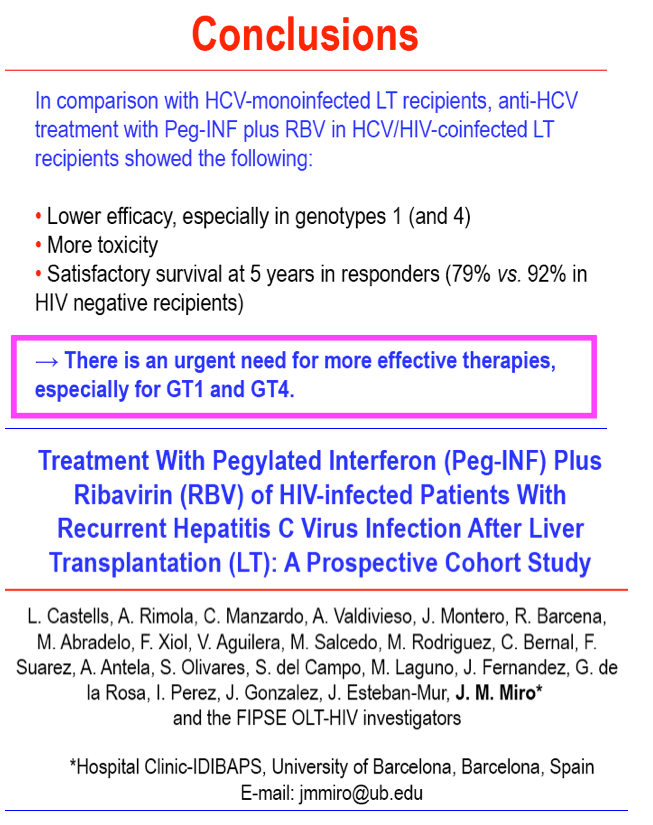
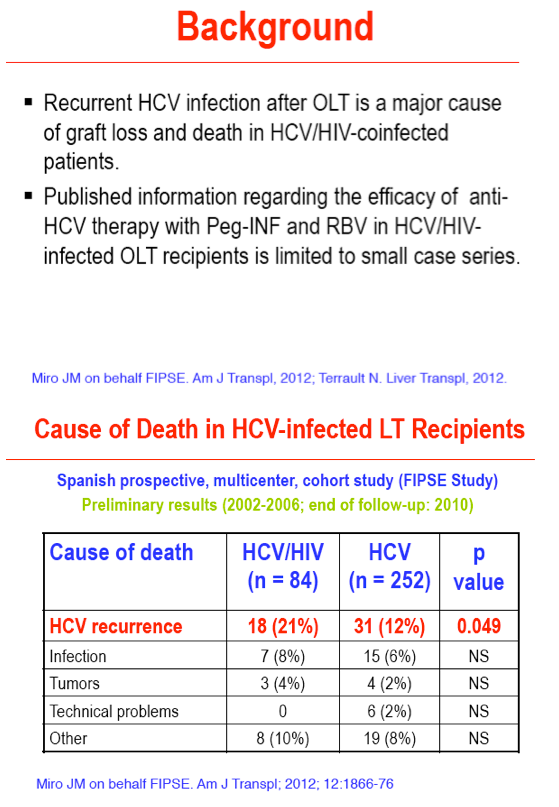
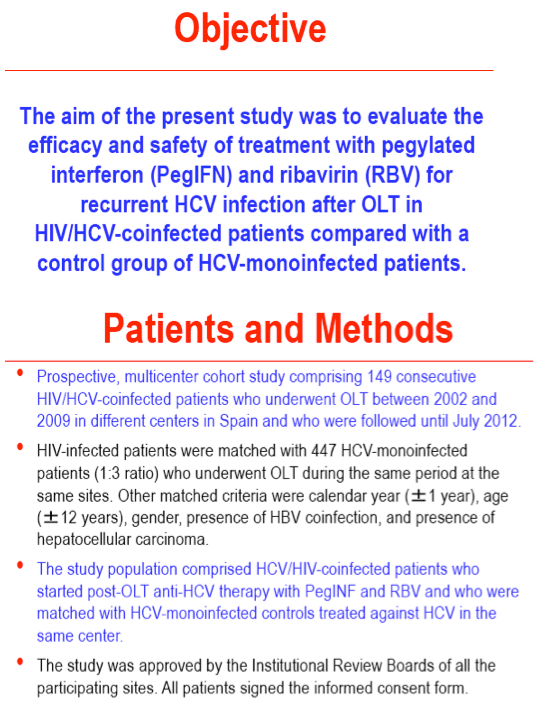
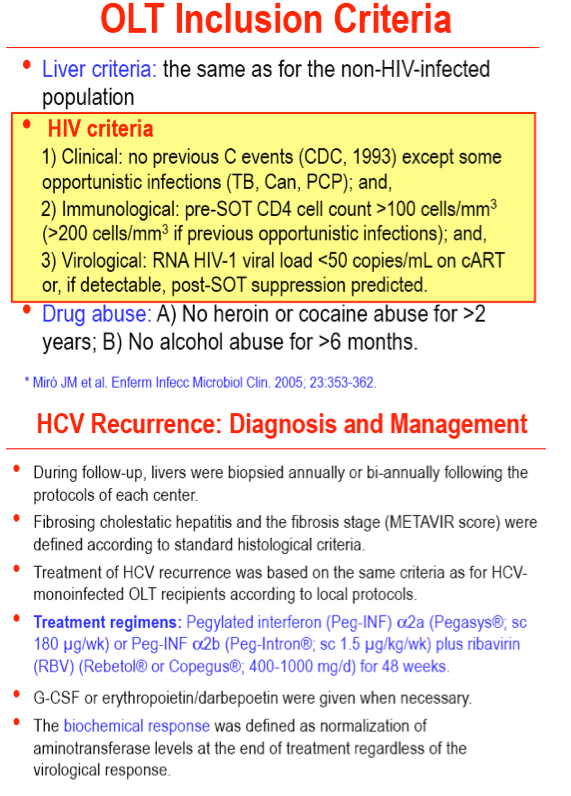
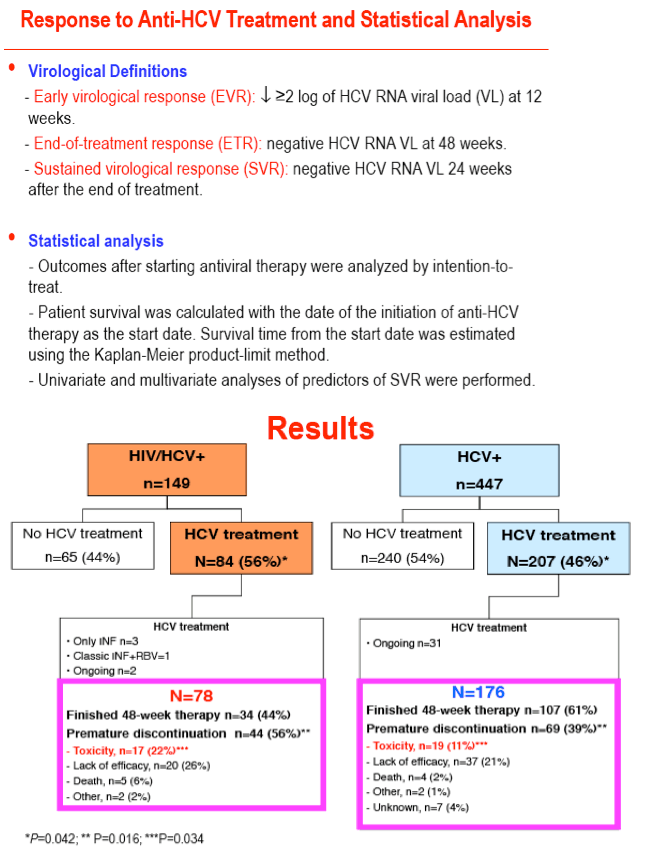
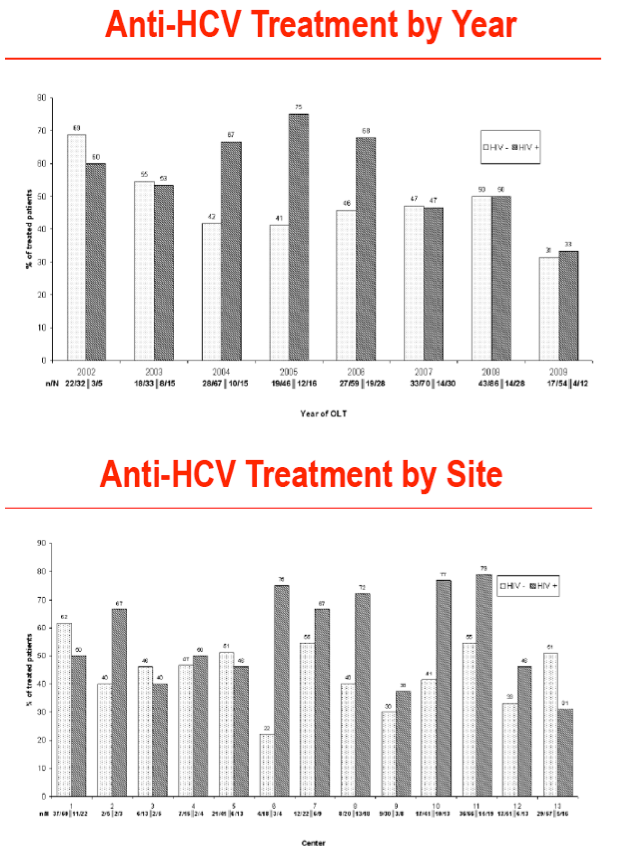
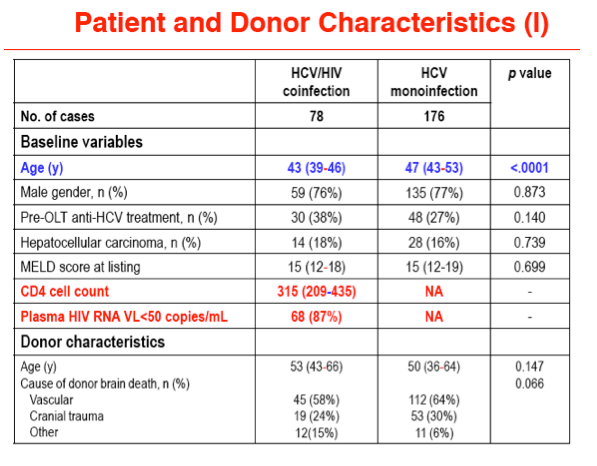
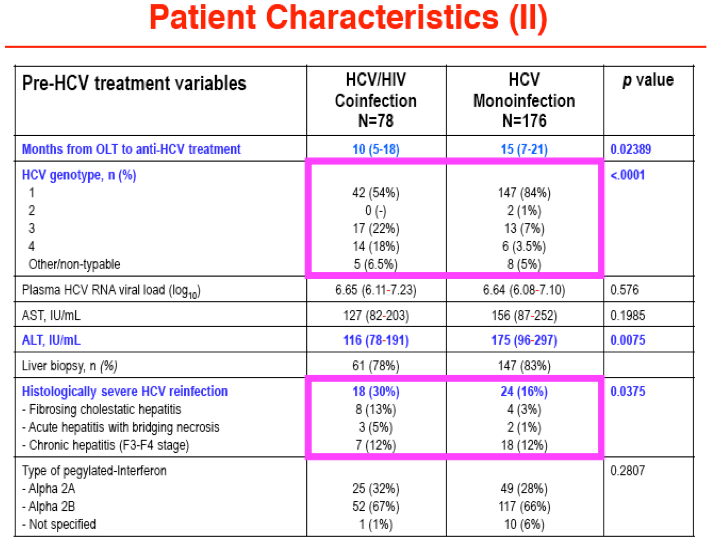
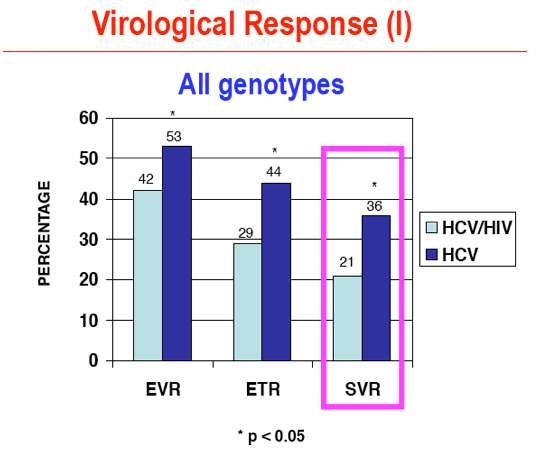
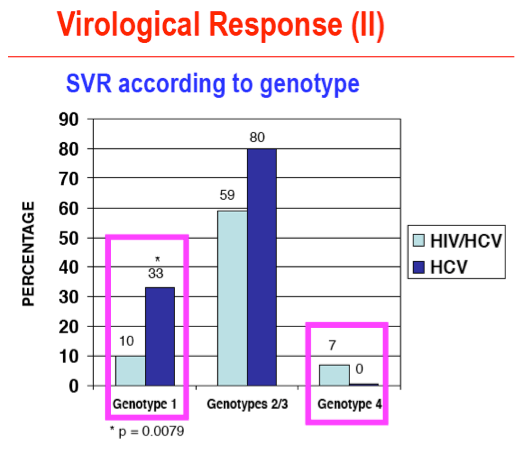
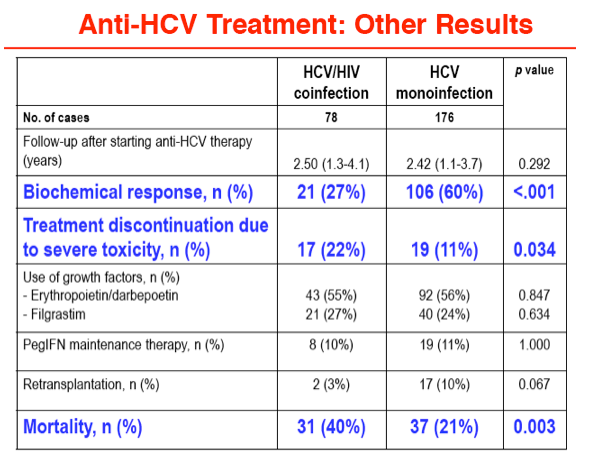
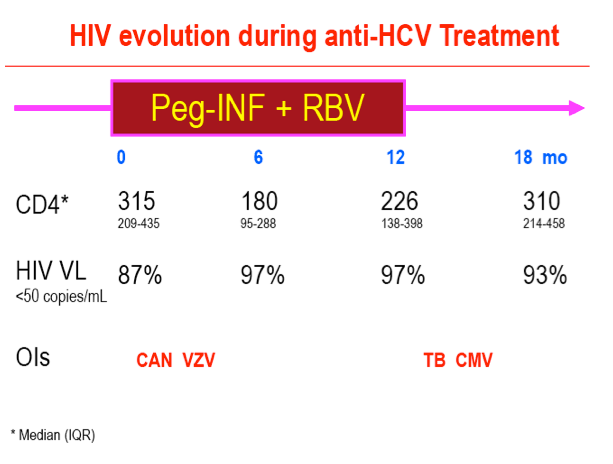
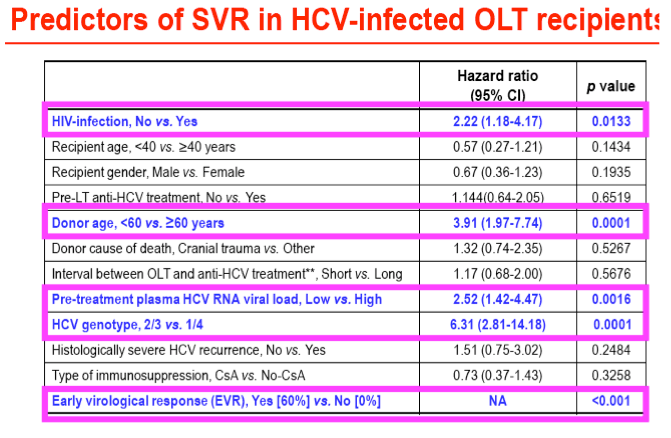
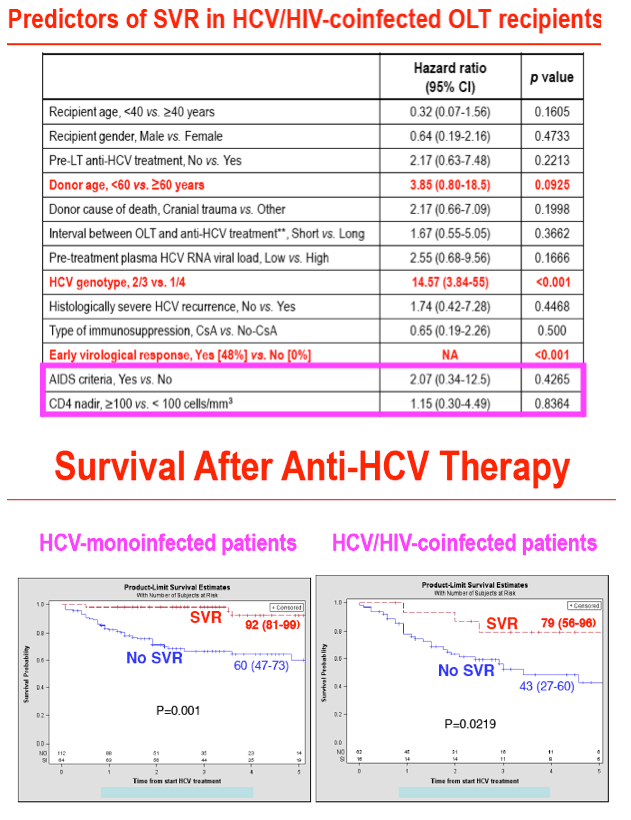
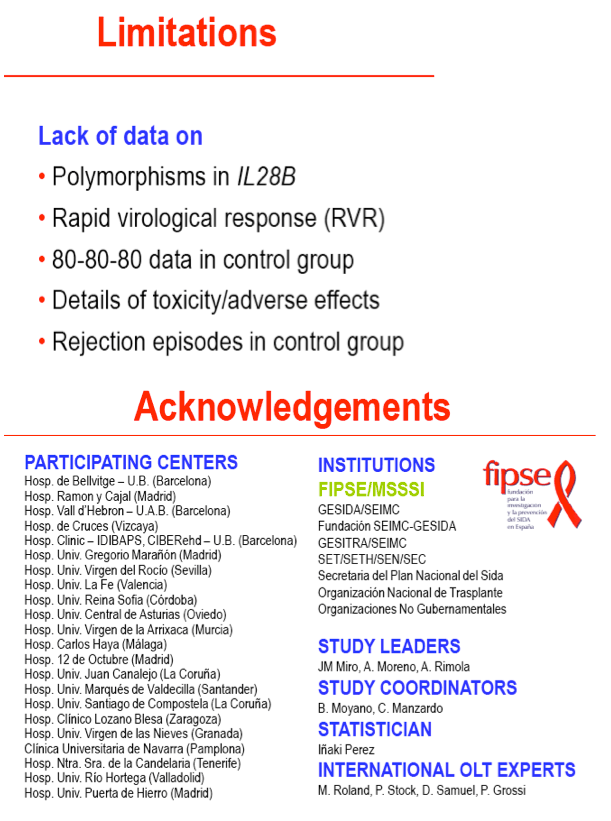
|
| |
|
 |
 |
|
|